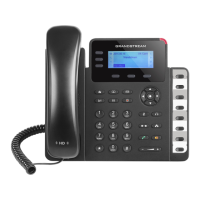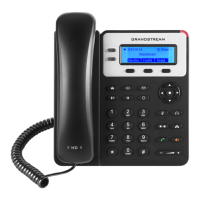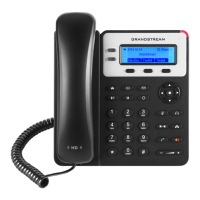GXP16XX Administration Guide
Version 1.0.4.100
OPTIONS Keep Alive
Interval
Specifies the frequency (in second) in which the phone will send the Keep Alive
message to the server.
OPTIONS Keep Alive
Max Lost
Specifies the maximum number of allowed lost packet before the phone will
refresh its registration.
Defines the local SIP port used to listen and transmit. The default value is 5060
for Account 1, 5062 for Account 2, and 5064 for Account 3.
SIP Registration
Failure Retry Wait
Time
Specifies the interval to retry registration if the process is failed. The default
value is 20 seconds.
SIP T1 Timeout is an estimate of the round-trip time of transactions between a
client and server. If no response is received the timeout is increased, and
request re-transmit retries would continue until a maximum amount of time
define by T2. The default setting is 0.5 seconds.
SIP T2 Timeout is the maximum retransmit time of any SIP request messages
(excluding the INVITE message). The re-transmitting and doubling of T1
continues until it reaches the T2 value.
The default setting is 4 seconds.
Determines the network protocol used for the SIP transport. Users can choose
from TCP, UDP and TLS.
SIP URI Scheme when
using TLS
Specifies if “sip:” or “sips:” will be used when TLS/TCP is selected for SIP
Transport. The default setting is “sips:”.
Use Actual Ephemeral
Port in Contact with
TCP/TLS
This option is used to control the port information in the Via header and Contact
header. If set to No, these port numbers will use the permanent listening port on
the phone. Otherwise, they will use the ephemeral port for the connection.
Configures the outbound proxy mode, to place in route header in sending SIP
messages, or always sent to outbound proxy.
Default setting is “in route”
Defines whether SIP Instance ID is supported or not. Default setting is “Yes”.
When set to “Yes”, a SUBSCRIBE for Message Waiting Indication will be sent
periodically. The phone supports synchronized and non-synchronized MWI. The
default setting is “No”.
SUBSCRIBE for
Registration
When set to “Yes”, a SUBSCRIBE for Registration will be sent out periodically.
The default setting is “No”.
